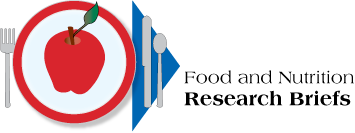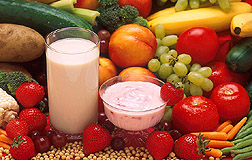
| July 2019 |
Study Gives Insight into Diet, Gut Bacteria and Chronic DiarrheaA new Agricultural Research Service (ARS) study reveals, for the first time, how diet and bacteria may interact to prolong chronic diarrhea in monkeys. Like humans, rhesus macaques—a well-known species of Old-World monkeys—suffer from gastrointestinal diseases of unknown cause. Two bacteria were found to interact to produce a bad outcome. Bacteria believed to be "good" were cross-feeding the sugar fucose to bacteria that may not be so good. This would not be detectable with standard culture-based systems, whose limited testing look only for one bacterium as the culprit in a syndrome or disease, she said. With the research team's SAMSA2 software, they were able to identify which genes were being expressed in the colon of diseased and healthy monkeys. Even though healthy monkeys and those that developed diarrhea were consuming the same foods, this study showed that the "diet" of their gut microbes was not the same. Gut microbes can consume carbohydrates from eaten food or from carbohydrates produced by intestinal cells. The study showed that gut microbes in diseased animals were expressing more genes that enabled them to consume more of the carbohydrates produced by intestinal cells. These findings could have implications for chronic gastrointestinal diseases such as ulcerative colitis that affect humans. For details, contact: Danielle Lemay, (530) 752-4748, Western Human Nutrition Research Center, Davis California. |
|
New Food and Nutrient Data System for Researchers, Consumers LaunchesFoodData Central, an integrated food and nutrient data system has been launched managed by ARS' Beltsville Human Nutrition Research Center and hosted by the National Agricultural Library to provide online access to nutrient profile information about a wide variety of foods and food products. The system should prove to be an essential resource for researchers, nutrition professionals, health care providers, product developers, policy makers and consumers. It provides links to relevant agricultural research data from multiple sources, enhances the transparency about the sources of nutrition information, provides data that is based on the latest scientific research, and is representative of the marketplace. The data base contains—in one place—five distinct types of food and nutrient composition data. It incorporates the data USDA has provided for years but adds two new types of data that are grouped under new topics. "Foundation Foods" provides expanded nutrient information and extensive underlying metadata that will help users understand the variability in the nutrient values of foods. "Experimental Foods" links to data about foods produced by agricultural researchers that will allow users to see for themselves how factors such as climate, soils and agricultural practices can affect a food's nutritional profile. For details, contact: Pamela R Pehrsson, (301) 504-0635, Nutrient Data Laboratory, Beltsville Human Nutrition Research Center |
|
Gut Bacteria from Breastfeeding Linked to Improved Infant Response to VaccinessHigher levels of a common gut bacteria enhanced by breastfeeding in early infancy were found to be coupled with an improved response to vaccines in infants through two years of age, according to a first-of-its-kind study by ARS scientists and their colleagues. Infants in the study, who were all breastfed from birth to at least 15 weeks, developed a healthy abundance of bacteria from the genus Bifidobacterium in their gut microbiome—the complete community of microorganisms (such as bacteria, fungi, and viruses) that inhabit the intestinal tract. Infants with the highest Bifidobacterium levels when they were vaccinated before 15 weeks of age had responses to tuberculosis, polio (oral), tetanus, and hepatitis B vaccines that were from 42 percent to 107 percent higher than infants with the lowest Bifidobacterium levels. And the higher response lasted until the infants were about two years old, when the study ended. For details, contact: Charles B. Stephensen, (530) 754-9266, Immunity and Disease Prevention Research Unit, Western Regional Human Nutrition Center, Davis, California. |
|
Pork Essentially Free of Veterinary Drug ResiduesAlmost no veterinary drug residues were found and none at levels that even approached U. S. regulatory limits in more than 1,000 pork kidney samples, according to a study just published by an ARS scientist in Food Additives & Contaminants: Part A. A total of 1040 pork kidneys were purchased from four grocery stores in the Midwest and tested for residues of 5 commonly used veterinary drugs and feed additives: flunixin, penicillin G, ractopamine, sulfamethazine and tetracycline. Pork kidneys are commonly used as an indicator meat as they are readily accessible and tend to concentrate drug residues compared to more commonly consumed muscle meats. Only 6 samples from the 1040 tested—0.58 percent—were positive when screened for antibiotics, indicating these samples potentially contained antibiotic residues.
For details, contact: Weilin Shelver, (701) 239-1425, Animal Metabolism-Agricultural Chemicals Research Unit, Fargo, North Dakota |
|
Tomato Pan-Genome Makes Bringing Flavor Back EasierMapping the pan-genome for the cultivated tomato and its wild relatives has revealed 4,873 genes that were absent from the original reference genome, including a rare form of a gene labeled TomLoxC, which influences fruit flavor by catalyzing the biosynthesis of a number of lipid (fat)-involved volatiles—compounds that evaporate easily and contribute to aroma. The discovery of this gene may make it easier for scientists to improve the flavor of grocery store tomatoes. This pan-genome includes all of the genes from 725 different cultivated and closely related wild tomatoes.
For details, contact: James Giovannoni, (607) 255-1414, Plant, Soil and Nutrition Research Laboratory, Ithaca, New York. |
|
To Press or Not to Press: That is the QuestionResults from a joint study by ARS and Drexel University (DU) scientists will help farmers better weigh the merits of pressing soybeans on-site rather than transporting their crop to a crush (processing) facility, where the oil and meal can be extracted for sale. This can be an economic decision, or one based on more personal considerations such as reducing fossil fuel use or the greenhouse gas (GHG) footprint of farming. Among the results: 1) farm-scale soybean press facilities can add economic value to soybean production; 2) producing on-farm energy from soy oil was profitable in coastal Atlantic and Gulf regions, where the market price for meal was higher than in other regions; and 3) in these two regions, replacing conventional diesel with soy-based biodiesel used in farm vehicles offered an affordable way to reduce GHG emissions. However, in the Midwest, America's top soybean-growing region, selling soybeans to the large crush facilities made more sense. This was because of an abundance of such facilities reducing the crush margin (the difference in price between raw soybeans and processed meal/oil).
For details, contact: Paul Adler, (814) 865-8894, U.S. Pasture Systems and Watershed Management Research Unit, University Park, Pennsylvania |
USDA Reaffirms Science-Based Decision Making at G20 Agricultural Chief Scientists MeetingTwo of the U.S. Department of Agriculture's top scientists reaffirmed the United States' commitment to science-based decision-making at the G20 Agricultural Chief Scientists (MACS) meeting that were held in Tokyo. ARS administrator Chavonda Jacobs-Young, also serving as USDA's Acting Chief Scientist, and Scott Hutchins, USDA's Deputy Under Secretary for Research, Education, and Economics, led the U.S. delegation. The United States has participated in MACS meetings since 2012.
For details, contact: Justice Wright, 202-720-5923, Research, Education and Economics, Washington DC. |







